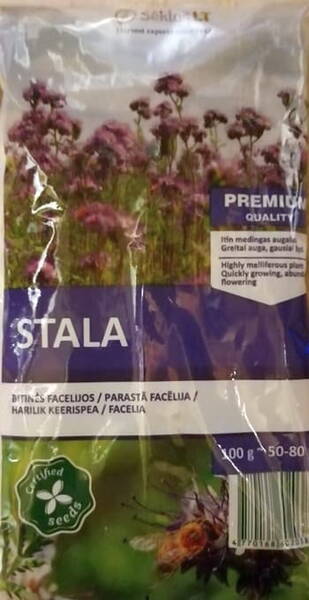100.0 g = 50-80 m2.
Valuable annual melliferous, fodder, green manure and ornamental plant.
Forms a branched stem 30-70 cm high, covered with hairs. The leaves are alternate, sometimes with a bluish tint. In the middle of summer, small blue or pale blue flowers up to 2 cm in diameter are formed. When spring sowing, flowering begins in 35-40 days and lasts up to 1.5 months.
Lacy phacelia is considered an excellent honey plant.
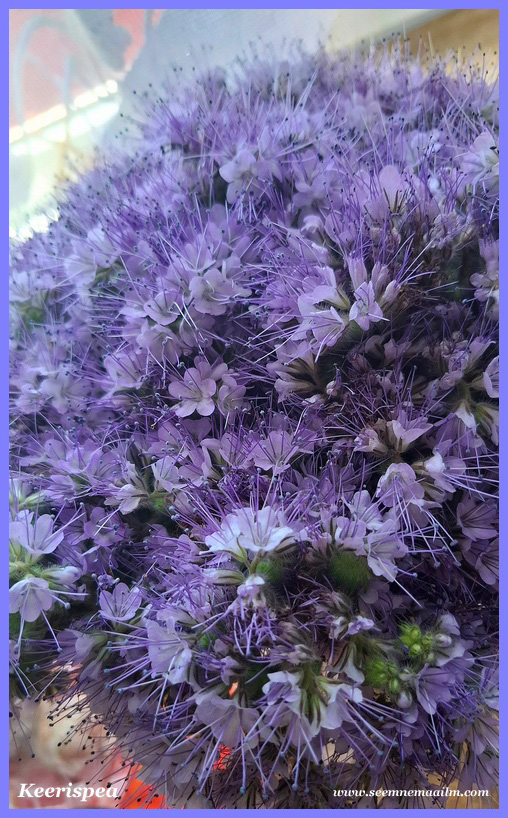
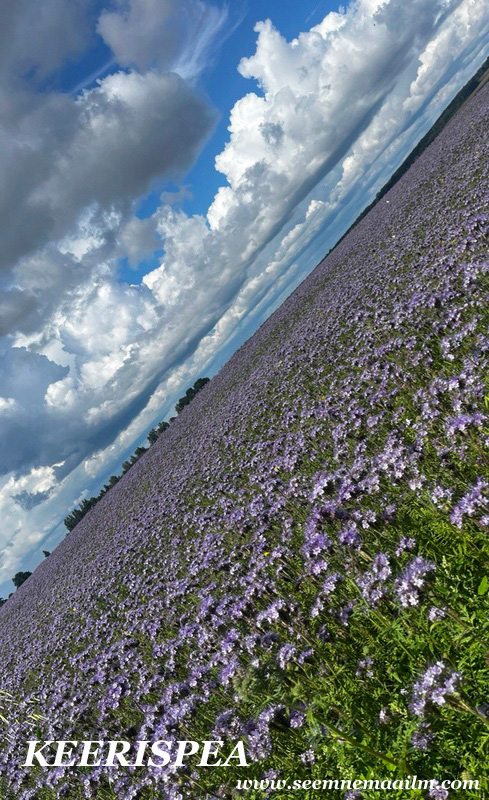
Each flower lives for 2 days, releasing up to 4-5 mg of nectar, from which high quality honey is obtained. In addition, phacelia is used as a "green manure". It is sown in sunny areas with poor soils. Then the land is plowed, burying the whole plants, and thus enriching the soil with organic matter. As an ornamental plant used as a background, it looks great as a free-standing curtain, goes well with any other flowering plants. The optimum soil temperature for seed germination is +18+20°C.
The seeding rate is 9-12 kg/ha (6.0 g/m2) 700 seeds per 1 g (it is recommended to roll the soil after sowing). You can sow phacelia in April or later - at the beginning of each month (from the end of July to October). In this way, you can get a continuous conveyor of honey phacelia.
Phacelia can also be used as livestock feed, sown in a mixture with cereals and legumes.
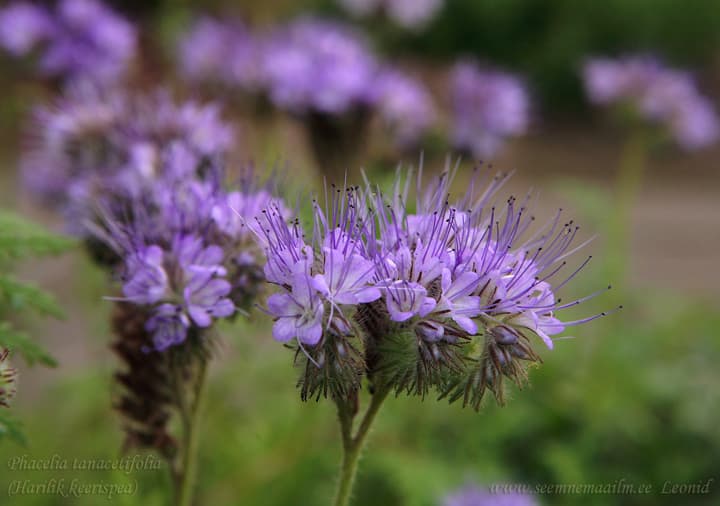
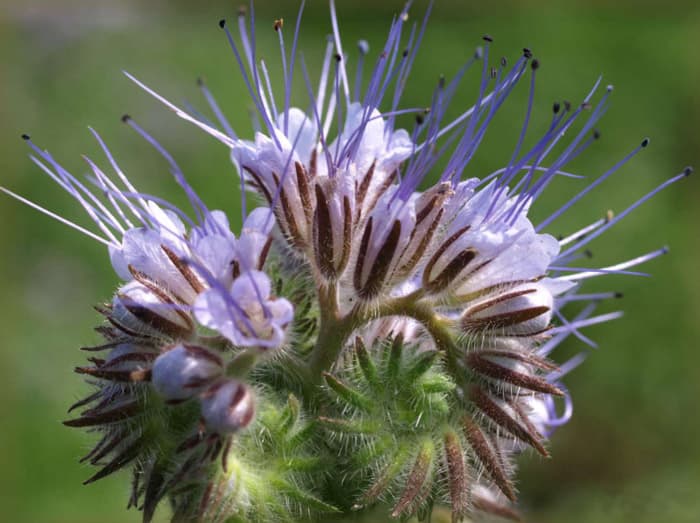
Lacy phacelia.
We plant... fertilizers.
"Killing two birds with one stone": increasing soil fertility and destroying weeds.
Green manure crops, or, as they are also called, green fertilizers, are grown on the site to improve the structure of the soil and increase the content of nutrients in it. In addition, green manure is an environmentally friendly source of organic matter, they contribute to the accumulation of humus in the soil. In terms of efficiency, these crops are equivalent to manure and are inferior to it only in terms of the content of phosphorus and potassium. If you are just starting to develop the site or grow mostly annual plants in the garden, then you can use green manure along with classic weeding to control weeds. They grow very fast and will compete with weeds. Some green manure crops absorb elements of mineral nutrition that are difficult to access for many vegetable and fruit plants from the soil. Later, during the decomposition of green manure, these elements are “released” and used by cultivated plants.
Plants from the legume family (lupins, peas, vetch, seradella, clover, sweet clover), from the cabbage family (mustard, rapeseed, oilseed radish) and other fast-growing plants (buckwheat) are suitable for green fertilizer.
Legumes assimilate and accumulate nitrogen due to the symbiotic activity of nodule nitrogen-fixing bacteria.
Most cruciferous plants have phytosanitary properties: they suppress the development and reproduction of weeds, expel pests such as nematodes and wireworms.
Planting cultivated plants immediately after plowing green manure is undesirable, since during the decomposition of the vegetative mass in the soil, active biochemical processes occur that inhibit seed germination and plant growth. Therefore, you will have to wait 2-4 weeks and only after that start planting.
Dig up or plow the earth, loosen it, breaking up all the clods, and level it with a rake. Scatter green manure seeds by hand or with a seeder and lightly level the ground with a rake. To prevent green manure from growing weeds, it is sown not in rows, but scattered and then covered with a rake. Approximately 2-4 weeks before planting the main crop, dig green manure into the soil. If this is difficult to do, you can first cut the green manure by hand and grind it. The aerial part of green manure is plowed on light soils to a depth of 15-18 cm, on heavy soils (clay) - 12-15 cm. Moreover, the younger the plants, the faster their vegetative mass decomposes.
In orchards, it is better to use green fertilizers from legumes (lupins) or an oat-pea mixture. Seeds are sown in early spring in tree trunks. The green mass of plants is plowed into the soil in summer before budding begins. After that, you can immediately re-sow green manure crops.
With early spring sowings, as soon as the snow has melted, early-ripening cold-resistant plants are picked up - mustard, oilseed radish, oats. If time permits (for example, during late summer and autumn plantings in the aisles of the garden), it is best to bring green manure crops to the flowering stage.
When using green fertilizer, consider this feature - do not plant plants from the same family as the green manure crop (for example, cabbage cannot be grown after oilseed radish). This is due to the accumulation in the soil of pathogens or pests characteristic of plants of this family.






